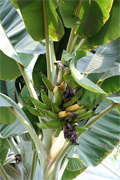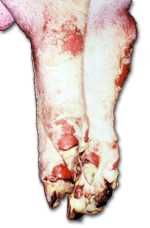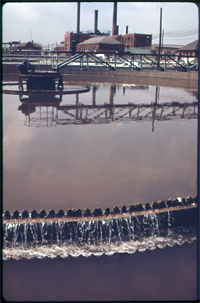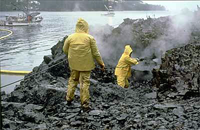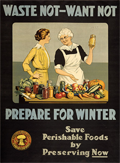Real-world problems
Plant diseasePlant diseases are now detected, managed and treated because of scientific discoveries summarised by the Victorian Department of Primary Industries.
As well as using gene technology to develop disease-resistant plants, biologists are also developing biological pesticides. Cowpeas are a staple crop for over 200 million people in sub-Saharan Africa. Read how CSIRO scientists are developing insect protected cowpeas. Fruit fly that damage fruit and vegetable crops in eastern Australia are being combated by the release of irradiated, sterile male flies that compete with the normal males for a mate but produce no offspring. |
Animal disease
Many medications developed to treat animal diseases are the result of biotechnology. Watch how the CSIRO Animal Health Laboratory helps to protect Australian agriculture from animal disease. |
Sewage treatmentRead a summary of modern wastewater treatment techniques. Biotechnology has been applied to sewage treatment. The discovery of chlorine and its use as a disinfectant resulted in increased human life expectancy. |
Remediation and other wasteCSIRO lists the ways biotechnology is used when dealing with waste. The use of enzyme products (special proteins made by living things) removes pesticides from water. Toxic sites can be reclaimed using microorganisms and some plants. Cleaning up the Exxon Valdez oil spill using traditional methods. Oil spills may be cleaned up more effectively and efficiently using microorganisms mixed with straw. Some genetically modified bacteria have been developed to do the job. |
Food PreservationPlay a food preservation game. Solve a food poisoning mystery–log in to Mystery matters and choose The taste of danger. Food preservation occurred well before the role of microorganisms in food spoilage was understood. The Australian Academy of Science explains the modern expectations for hygiene and the storage of food. |
Food preservation techniques have changed greatly since World War I. The Australian Nuclear Science and Technology Organisation (ANSTO) site describes how radiation can be used for food preservation. Watch the CSIRO video Safer food: from farm to fork. |
HygieneHand washing in hospitalsHygiene practices developed before scientific understanding of the cause of infectious disease. Read about how Ignaz Semmelweis transformed hospital practice and drastically reduced deaths from childbed fever in the 1850’s before germs had been discovered. Food poisoningHygiene is particularly important in the preparation of food (see the Food preservation tab). This Australian Academy of Science text explains how to prevent food poisoning. |
How germ theory developedThis video shows how Jenner discovered the first vaccine and how Pasteur and Koch contributed to this discovery. View this slideshow to learn more about the work of Pasteur, Koch and others to discover the cause of infectious disease. |
